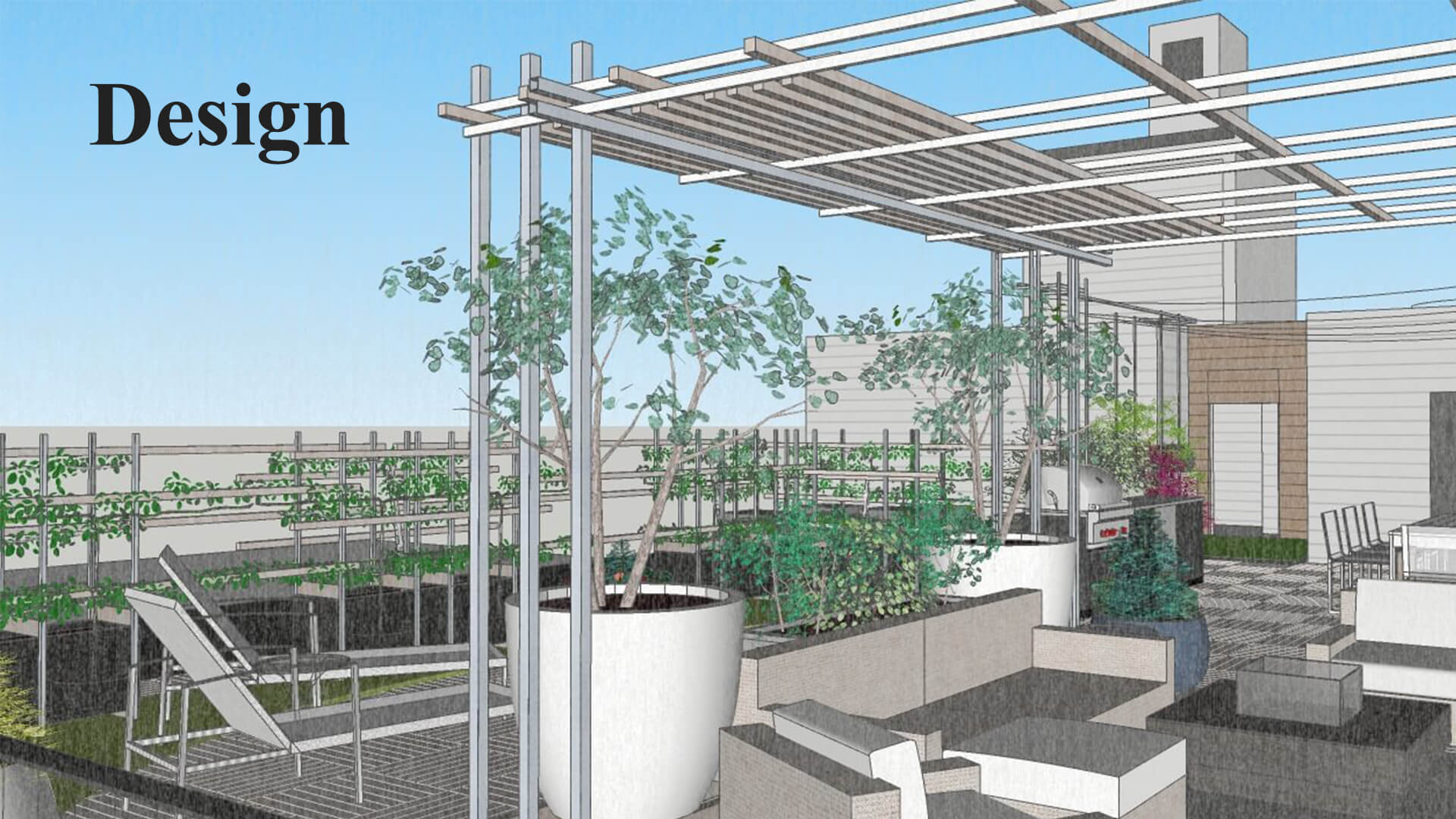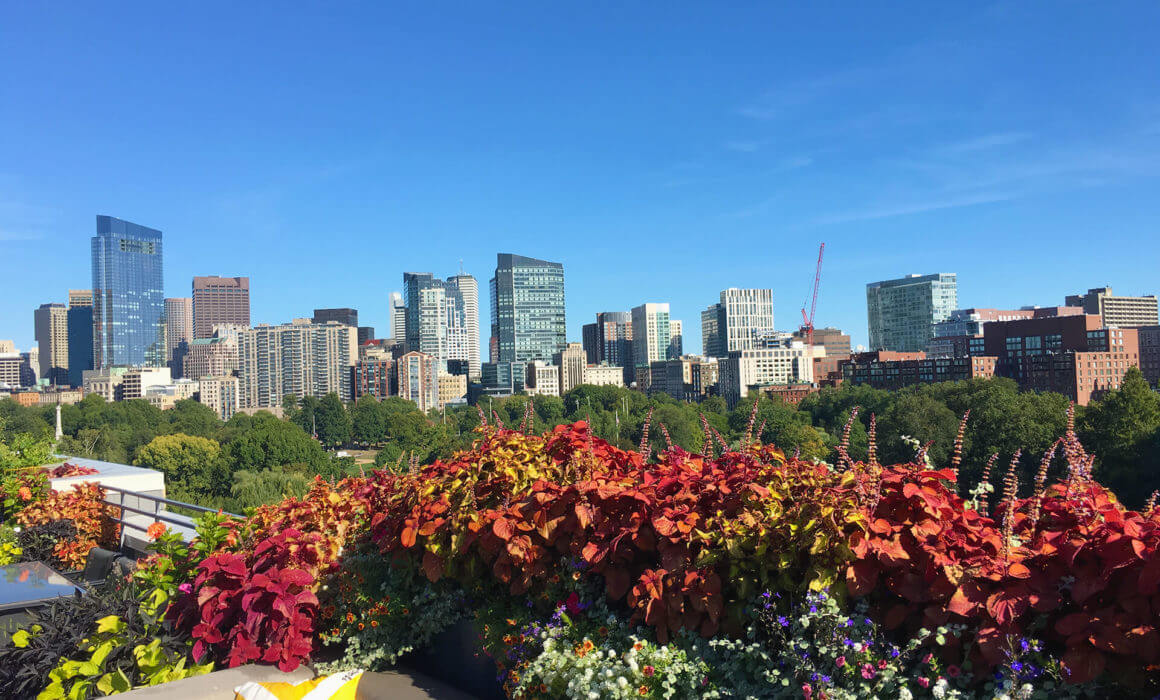What is Urban Landscaping?
Cities today are becoming more populated than ever before, forcing exterior landscape designers to find new and creative ways to work with the city environment. Urban landscaping works to add residential and commercial gardens to areas with a small footprint. Residents in cities today are still looking to enjoy spending time outdoors. City landscaping helps to offer an improved quality of life for individuals worldwide.
Features of Urban Landscaping
Designers and landscapers today are incredibly creative when making the most of the limited space in city environments. Urban landscaping can transform any plot or rooftop into a beautiful space in which homeowners and residents will enjoy spending time outdoors. With the ever-increasing population in cities, these outdoor spaces help offer residents much-needed additional living space.
Urban landscaping commonly includes:
- Adding rooftop gardens to buildings
- Terrace landscaping
- Transforming courtyards or public areas within apartment complexes
In addition to private properties, large corporations use urban landscaping to offer their employees an outdoor space to visit on their lunch break. Individuals today are beginning to understand the benefits that spending time in nature can provide to everyone. Even in cities, creating beautiful outdoor spaces can be crafted with the proper design.
Urban landscaping usually combines various elements and techniques to create outdoor spaces that are functional yet aesthetically pleasing. Recreational areas and parks often feature modern art installations, playgrounds, and facilities for pets. They take older spaces and make them usable and accessible to an increased population. For instance, water management and horticulture best practices are the first steps. Then, buildings and outdoor spaces can offer residents the chance to spend more time in nature. These environmentally conscious spaces decrease stress and promote a more balanced lifestyle. These spaces last for very many years and serve to attract more residents in the future.

How Does Urban Landscaping Work?
Urban landscaping starts with a piece of land of any shape or size. Then, you improve its aesthetic and usability for the neighboring area or building. However beautiful your space is now, urban landscaping can completely transform it. The goal is to offer a beautiful and relaxing place of nature within the city. Of course, this can sometimes be an incredibly challenging undertaking, especially with more quaint and compact spaces. Urban landscaping involves architects, surveyors, horticulturists, and landscape designers. However, these experts work together to enhance the building while ensuring the garden is safe for humans and animals.
Planning is a crucial consideration when opting to add rooftop gardens or terrace landscaping to a property. Concept plans will help visualize whether the idea is realistic with the space you are working with and will help to strategically place plants, grass, and trees in the garden. Suppose fencing and decking are also part of the plan. In that case, you’ll also map out the plans for these additions. You can split urban landscape design into a few steps. This way, landscapers and designers work within city environments and make the most of their limited space.
Educational and Recreational Spaces
Urban landscaping also offers an excellent tool to educate the population on farming and wildlife. Moreover, community gardens often help schools or nonprofits. Many of these organizations welcome the public to visit to learn more about gardening with limited space. Today, many apartment blocks have a communal garden space. Most importantly, these spaces allow residents to meet and work together to maintain their surroundings. Furthermore, city farms can help children learn more about farm animals and gardens.
Explore some of Foliaire’s work in urban landscaping spaces!
Working With Restrictions
One of the biggest concerns when undertaking an urban landscaping project is the state and local government restrictions. These restrictions will dictate what you can add to a building’s rooftop or courtyard area and the extent to which you can change the area’s overall appearance. When adding plants or water features, it’s critical to consider both water restrictions and weight limitations, which may impact the water usage in an area. Natural bodies of water often can’t be touched within cities, which may reduce the space available to you when considering a city landscaping project.
Element restrictions can also dictate the type of plants and grass you can add to rooftop gardens. Some cities will only allow you to use low-water plants or native species. From there, you can review the zoning laws, which will regulate fence placement and height, and the structures, fencing, and decking you can add to a project. Restrictions may seem like quite an inconvenience for urban landscapers, but you must take the time to review these first for anyone undertaking a new project.
Planning for Urban Landscaping

After assessing all panning considerations, time must be allotted for the planning process. After that, you’ll be ready to begin constructing rooftop gardens or commercial gardens. The site will need to be fully surveyed and assessed to identify how you can transform it for another use. A plot plan or site plan will allow designers to find locations for drainage. For permanent structures, blueprints are submitted to ensure that the project is allowed to go ahead and will follow all of the restrictions in place in the city.
Key Takeaways
The number of people living within cities is only continuing to increase. With the limited number of private gardens attached to homes, urban landscaping helps to offer residents a way to spend time outdoors and connect with nature. The work that landscapers and designers complete today in cities are incredible. They can take an old and unused space and repurpose it for specific communities. If you’re thinking about urban landscaping, you should always follow the regulations for your local area. Create thorough plans before starting work. With the right guidance, you can make the most of any outdoor space and create a beautiful roof garden or terrace to make your evirons enjoyable.
If you’re looking to take advantage of your urban environment, Foliaire can help!
Learn more about our expert city landscape design services today
About Foliaire
Foliaire is a full-service interior and exterior greenscape design-build firm in Boston’s historic South End. For the last 40 years, we’ve provided the highest quality plantscaping service for clients all across the Boston Metro area. We customize and plan all of our installations to fit your unique space and tastes. That’s how we’ve built a reputation of unparalleled style and elegance for both corporate and residential community projects. In addition, we’ve received several environmental design awards and have appeared in several publications, including Architectural Digest, House and Garden, Horticulture, and Interiorscape. Follow us on social media to learn more:
- Instagram – @foliaire.inc
- Facebook – FoliaireInc
- Twitter – @foliaire
- LinkedIn – Foliaire-inc

